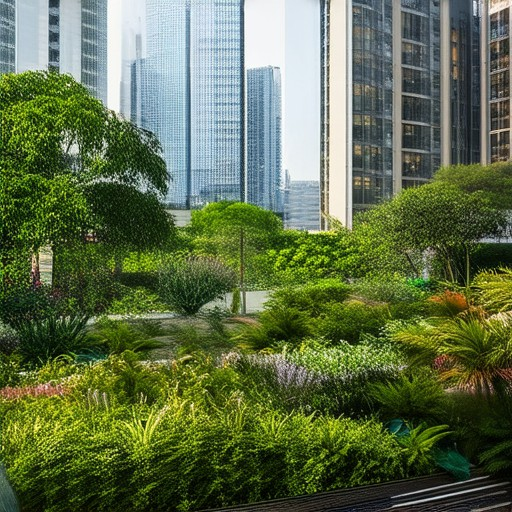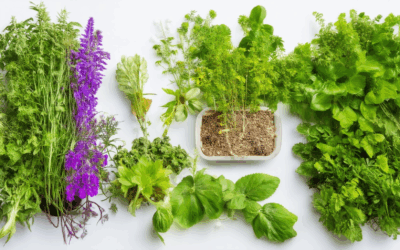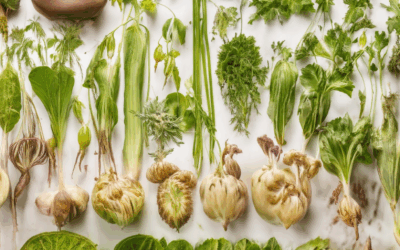In bustling cities where space is scarce, how can we cultivate thriving green spaces? Urban sustainable gardening offers a transformative solution, allowing us to create oases of nature amidst the concrete jungles. By integrating eco-friendly practices, urban gardens not only beautify our surroundings but also contribute to a healthier environment, improved air quality, and enhanced community resilience. This guide explores the ins and outs of urban sustainable gardening, delving into its benefits, challenges, and innovative approaches to maximize space and minimize impact. Whether you’re a seasoned gardener or new to the craft, discover how to harness the power of urban gardening to create a sustainable haven in your city neighborhood.
Key Takeaways
– Mitigate Water Usage Challenges: Adopt water-efficient irrigation systems to reduce strain on local resources.
– Maximize Vertical Space: Utilize innovative techniques to grow plants vertically, even in small urban areas.
– Enhance Waste Management: Implement composting and recycling programs to minimize environmental impact.
– Address Pest Control Effectively: Employ natural deterrents and monitor closely to protect your garden from pests.
– Consider Air Pollution Impact: Choose plants that thrive in polluted environments and position them away from high-traffic areas.
– Evaluate Environmental Trade-offs: Understand that urban farming can increase carbon footprints but can be mitigated with efficient practices.
The Gardening 3-Year Rule Explained
The gardening 3-year rule is a helpful guideline for understanding the growth patterns of plants over time, particularly focusing on perennials. Here’s a breakdown of how it works:
- First Year: During this period, your plants are establishing their roots and growing steadily. It’s important to allow them to settle in without disturbance. Avoid excessive harvesting or moving them, as their focus is on becoming firmly rooted and developing strength.
- Second Year: In the second year, many plants begin to creep or spread. This is a good time to observe their growth and consider dividing them or moving them to new locations. They are now more resilient to minor changes and can adapt well to their new environments.
- Third Year: By the third year, your plants are considered mature and ready to leap into various settings. This is the optimal time to transplant them, knowing they will thrive regardless of their new location due to their established root systems and growth patterns.
This rule emphasizes the importance of understanding and respecting the natural growth cycles of plants. By following it, you can enhance your gardening efficiency, promote sustainability, and enjoy healthier, more robust plants in your garden.
How Urban Gardening Helps Attain Sustainability
Urban gardening plays a pivotal role in fostering sustainability by addressing environmental, economic, and social challenges faced by modern cities. By cultivating plants and producing food closer to where people live, urban gardens contribute to a more sustainable lifestyle.
One of the primary benefits of urban gardening is its ability to reduce the carbon footprint associated with conventional agriculture and food distribution. Traditional farming practices often rely on long-distance transport, which emits significant greenhouse gases. In contrast, urban gardens localize food production, minimizing transportation needs and reducing energy consumption.
- Reduces Carbon Footprint: Local food production lowers emissions from refrigerated storage, packaging, and transportation, making it more eco-friendly.
- Supports Biodiversity: Urban green spaces created by gardens provide habitats for pollinators and wildlife, contributing to local biodiversity.
- Conserves Water Resources: Urban gardens often use drip irrigation and rainwater harvesting systems, which are more water-efficient than traditional farming methods.
- Promotes Local Economy: Urban farms and community gardens create jobs and support small businesses, boosting local economies while reducing reliance on imported goods.
- Improves Air Quality: Plants in urban gardens absorb pollutants, helping to clean the air and reduce the urban heat island effect.
Old Seed advocates for sustainable gardening practices that preserve heirloom seeds and promote organic growth. By embracing these methods, individuals can contribute to a more sustainable future while enjoying fresh, nutrient-rich produce. Explore our resources for tips on starting your own urban garden and learn how to maintain it effectively.
For more information on sustainable gardening techniques and the benefits of urban farming, visit Old Seed . Discover how you can integrate sustainable practices into your daily life and join the movement toward a greener tomorrow.
Sustainable Gardening
Sustainable gardening refers to a holistic approach to cultivating plants and ecosystems that promotes environmental health, biodiversity, and long-term productivity. This method focuses on practices that minimize ecological impact while maximizing the benefits of gardening.
Key Concepts of Sustainable Gardening
- Environmental Stewardship : Sustainable gardening prioritizes protecting and enhancing natural systems. Practices include reducing chemical inputs, preserving soil health, and creating habitats for pollinators and wildlife.
- Organic Practices : Using organic materials, such as compost and natural fertilizers, helps maintain soil fertility and reduces reliance on synthetic chemicals. This supports healthier plant growth and beneficial microorganisms.
- Water Conservation : Efficient irrigation techniques, like drip systems or rainwater harvesting, are essential. These methods reduce water usage and prevent over-extraction of groundwater.
- Biodiversity : Planting native species and diverse crops enhances local ecosystems and attracts pollinators like bees and butterflies, which are crucial for both gardens and broader environmental health.
- Cultural Significance : Sustainable gardening often has cultural and educational value. It fosters a deeper connection to nature and teaches valuable skills, encouraging stewardship of the land.
Benefits of Sustainable Gardening
- Eco-Friendly : Reduces pollution from chemicals and waste, contributing to cleaner environments.
- Resilience Building : Gardens adapted to their surroundings are more resistant to pests, diseases, and climate changes.
- Food Security : Promotes self-sufficiency and access to fresh produce during uncertain times.
Getting Started with Sustainable Gardening
- Research and Planning : Start by understanding your local environment and the specific needs of your plot. Use resources like Old Seed’s comprehensive guides to learn effective practices.
- Choose the Right Plants : Select species suited to your region and climate. Native plants are often ideal as they require less maintenance and support local wildlife.
- Implement Organic Methods : Incorporate compost, mulch, and natural pesticides. Consider joining communities like The Permaculture Guild for further insights.
- Monitor and Adapt : Regularly assess your garden’s health and adjust practices based on observations. This iterative process ensures continuous improvement.
By embracing sustainable gardening, you contribute to a healthier planet and create a more resilient, productive garden. Old Seed offers numerous useful tips and detailed guides to help you get started.
Cons of Urban Gardening
- Water Usage: Urban gardens require significant water supplies, which can strain local resources, particularly during droughts or dry seasons.
- Space Constraints: City living often limits available land, making it challenging to grow large crops or multiple plants.
- Waste Management: Small spaces can make composting and managing organic waste difficult, potentially leading to inefficient resource use.
- Pest Control Issues: In urban settings, pests like rodents and birds may find easier access to gardens, requiring regular monitoring and intervention.
- Air Pollution Impact: Proximity to industrial areas or heavy traffic can expose plants to harmful pollutants, affecting growth and health.
While urban gardening offers numerous benefits, these challenges highlight the need for thoughtful planning and sustainable practices to mitigate their effects. By adopting water-efficient irrigation systems, maximizing vertical space, and implementing effective waste management strategies, urban gardeners can overcome many of these cons. For further insights and tips, explore more resources on sustainable gardening practices at Old Seed .
Challenges of Gardening in Urban Areas
Gardening in urban environments presents several unique challenges due to the dense development and limited resources typical of city life. Here are some key reasons why it can be difficult:
- Limited Space:** Urban areas often lack the available land required for large gardens. Many residents live in apartments or condos with small balconies or patios, limiting the space for planting.
- Water Restrictions:** Many cities impose water usage limits to conserve resources. This can make it challenging to maintain lush gardens, especially during dry seasons.
- Poor Soil Quality:** Urban soils are often contaminated with construction debris and pollutants, making them less suitable for gardening. Additionally, compacted soil can hinder root growth.
- Pest Control Issues:** Urban environments can have higher populations of pests, including insects and diseases, which can be difficult to manage without chemical pesticides.
- Decline in Pollinators:** The absence of natural habitats for pollinators like bees and butterflies can negatively impact plant reproduction and overall garden productivity.
- Air Pollution:** Poor air quality in urban areas can damage plants and reduce their growth rates. Pollutants can also accumulate in the soil, making it less viable for gardening.
- Weed Competition:** With limited space and inadequate maintenance, weeds can easily outcompete desirable plants, requiring constant attention to keep the garden tidy.
- Insufficient Light:** Tall buildings and streetlights can block sunlight, leading to shade conditions that are unsuitable for many plants. This can limit the variety of crops or flowers you can grow.
- Container Gardening Challenges:** Even those with outdoor space may find container gardening demanding, as it requires specific soil preparation and regular maintenance to ensure healthy plant growth.
Why Is Urban Farming Bad for the Environment?
Urban farming, while seen as a sustainable practice, can negatively impact the environment due to several factors:
- Higher Carbon Footprint : Studies indicate that produce from urban farms typically has a carbon footprint six times greater than that of conventional farms. This discrepancy arises from less efficient farming methods, smaller scale operations, and potentially longer transportation distances to reach markets.
- Water Usage Concerns : Urban farms often face challenges with water scarcity, as they compete with municipal needs. Excessive water usage can strain local resources and affect aquatic ecosystems.
- Waste Management Issues : Increased organic waste generated by urban farms can lead to overburdened landfill systems, contributing to methane emissions—a potent greenhouse gas.
- Land Use Changes : Converting industrial or residential areas to farms may displace wildlife and disrupt urban layouts, affecting biodiversity and local infrastructure.
While urban farming offers benefits like local food production and green spaces, these environmental drawbacks highlight the need for sustainable practices to mitigate its negative impacts.








0 Comments